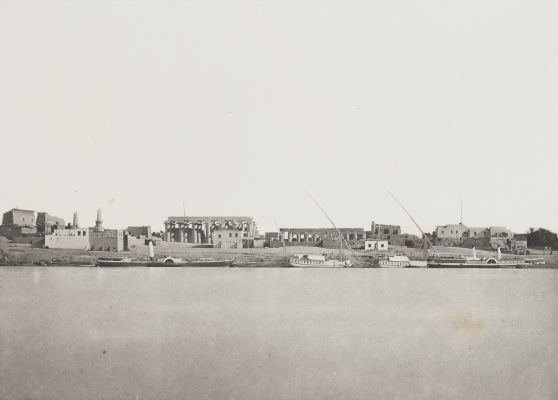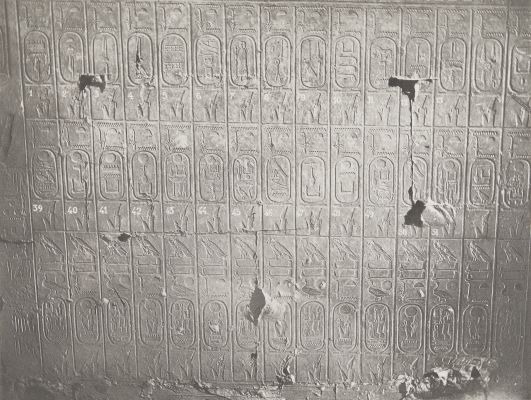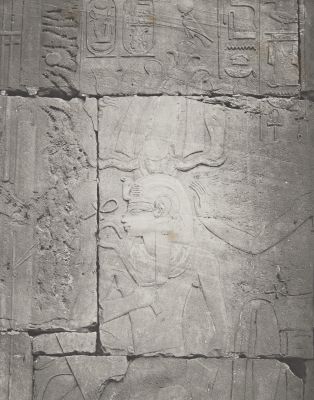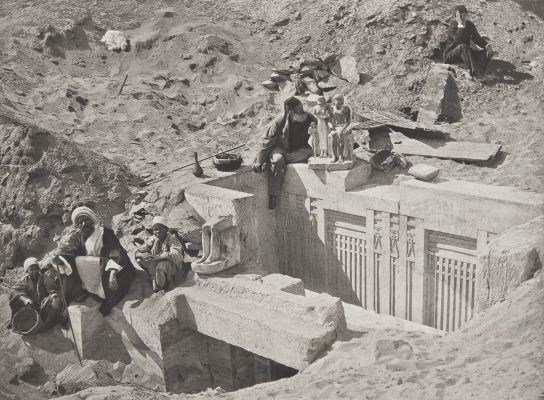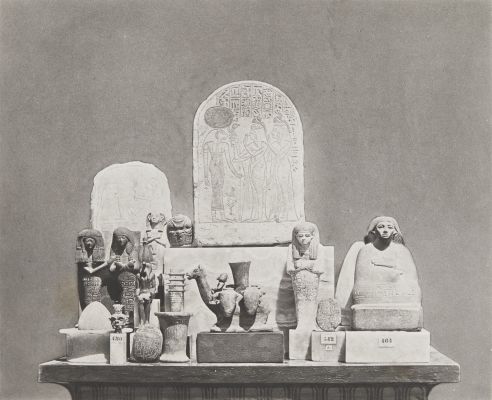
Title
24 Abydos Temple de SétiArtist
UnknownPublication
Voyage dans La Haute-ÉgypteDate
1878Process
PhotogravureAtelier
Goupil & CieImage Size
23.9 x 17.5 cmSheet Size
48.3 x 33 cm
Auguste Edouard Mariette had obtained a promise from the editor of the Cairo Museum that his photographs of Egypt would be reproduced by "inalterable processes". The process chosen by the book’s publisher, Goupil, was an early photogravure technique called Goupil Gravure – perhaps the most beautiful photogravure process ever practiced. Predating Klič, it’s origins are a bit of a mystery. Woodbury claimed it was from his idea. Swan claimed it was his father’s photo-mezzotint process. Rousselon stated in 1872, Our process is founded on the discovery of a chemical substance which crystallizes under the influence of light, the crystals becoming larger the longer they are exposed to it. After exposure it only remains to make a deposit of copper, by means of the electric battery, on the crystalline surface, and thus a plate is obtained yielding proofs in which every detail and gradation of tone is faithfully reproduced. According to an article in the Catalogue of the Exhibit of the American Book Trade for the Exposition Universelle Paris, 1889 (pg. 15), Rousselon learned the woodburytype process from Mr. Louis Husson, who worked for Woodbury in 1871. Rousselon went on to perfect his system of photogravure in 1872. The Goupil family eventually retired in 1884 and the company became Boussod, Valadon & Cie. It should be noted that Peter Henry Emerson remarked that he did not like that Goupil and Dujardin retouched their plates. [1]
Mariette was an Egyptologist and archaeologist for whom photography became an inseparable part of his activity. He mainly employed professional photographers such as Delie, Bechard, and Brugsch, but he himself also photographed, using an 8 x 19 inch camera, newly found artifacts and ancient structures in remote parts of the Egyptian desert. Despite having as its principal aim the visual documentation of ruins, there is little doubt that the photographer’s refine sense of composition and Goupil’s sumptuous heliogravure plates were also intended to present photographic book illustrations as art rather than merely documentation. First published in 1878, this work preceded by many years the efforts to utilize photogravure as fine art plates by Emerson and Stieglitz. [2]
Reproduced / Exhibited
Photographie II Collection Marie-Thérese et André Jammes Paris 21 March 2002 Lot 174
References
[1] Hanson, David Checklist of photomechanical processes and printing 1825-1910, 2017 p,. 121 see Russelon
[2] Perez, Focus East, early photography in the Near East, 1988, p.194
